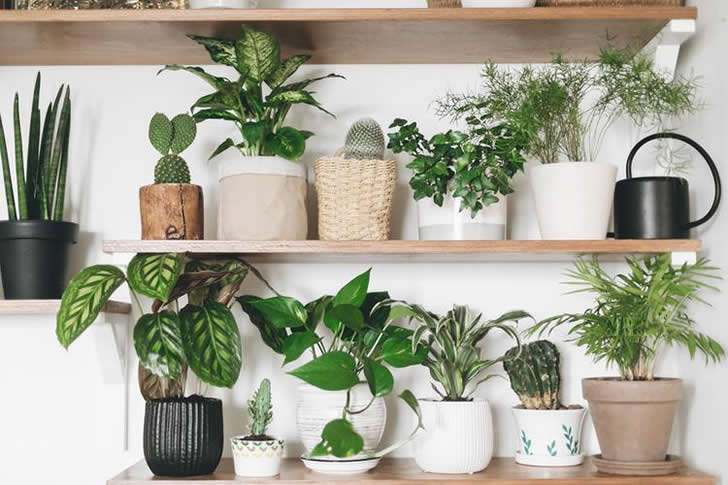5 NASA-Recommended Plants for Enhancing Indoor Air Quality
Indoor air quality is an important aspect of our overall health and well-being, and one way to naturally improve it is by incorporating NASA-recommended plants into our homes. Not only do these plants add beauty and greenery to our interiors, but they also have the ability to purify the air by absorbing harmful chemicals and toxins. In this article, we will explore some of the good NASA-recommended plants for air purification and how to care for them.

Aloe Vera:
Aloe vera is not only known for its soothing gel but also for its air-purifying properties. It effectively eliminates formaldehyde and benzene, which are commonly found in varnishes, floor finishes, and detergents. Aloe vera plants are low-maintenance and thrive in sunny spaces with minimal watering requirements.
Areca Palm:
Also known as the bamboo palm or golden cane palm, the areca palm is a beautiful addition to any indoor space. It has the ability to remove harmful substances like formaldehyde, xylene, and toluene from the air. Areca palms prefer filtered light and regular watering to thrive.
Broad Lady Palm:
Broad lady palms not only enhance the aesthetic appeal of your home but also filter out four common indoor pollutants: carbon dioxide, formaldehyde, xylene, and ammonia. These plants are relatively easy to care for and can tolerate a range of lighting conditions, from shady to fully sunlit areas.
Chinese Evergreen:
The Chinese evergreen, also known as Aglaonema, is a popular choice for its elegant and colorful foliage. It emits large amounts of oxygen while purifying the air by removing benzene and formaldehyde. Chinese evergreens can tolerate low water conditions but require indirect light to thrive.
Chrysanthemum:
Chrysanthemums not only add a pop of color to your home but also filter out toxins like ammonia and benzene, which are often present in plastics, detergents, and glue. They are low-maintenance plants that thrive in sunny locations.
Gerbera Daisy:
Gerbera daisies not only boast beautiful blooms but also produce high levels of oxygen while removing air pollutants. They are particularly beneficial for people with breathing disorders such as sleep apnea. Gerbera daisies thrive in bright sunlight and require regular watering.
Money Plant:
Money plants, also known as Devil’s Ivy, are believed to bring fortune and luck. They also have the ability to clean the air by removing chemicals like benzene, formaldehyde, xylene, and toluene. Money plants prefer indirect light and weekly watering.
Red-edged Dracaena:
Red-edged dracaena, or the Madagascar dragon tree, is not only unique in appearance but also helps fight pollution by reducing trichloroethylene and xylene in the air. This plant requires careful watering and thrives in rooms with high ceilings and indirect sunlight.
Spider Plant:
Spider plants are resilient and perfect for beginners. They improve air quality by reducing toxins like carbon monoxide and xylene. Spider plants thrive in indirect or low lighting conditions and are safe to have around pets.
Poinsettia:
Poinsettias are popular indoor plants during the Christmas season, and they also help remove toxins from the air. They prefer bright light and cooler temperatures for optimal growth.
To purify the air in your home with these plants, place them in appropriate locations based on their light and watering requirements. Regularly dust the leaves to keep them clean and healthy. Remember that while these plants have air-purifying properties, they should not be considered as a substitute for proper ventilation and air circulation in your home.
Bringing NASA-recommended plants into your home is a natural and cost-effective way to improve indoor air quality and create a healtauf dieser Seite living environment. Enjoy the beauty of these plants while reaping the benefits of cleaner, fresher air.







Recent Comments